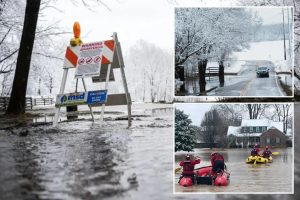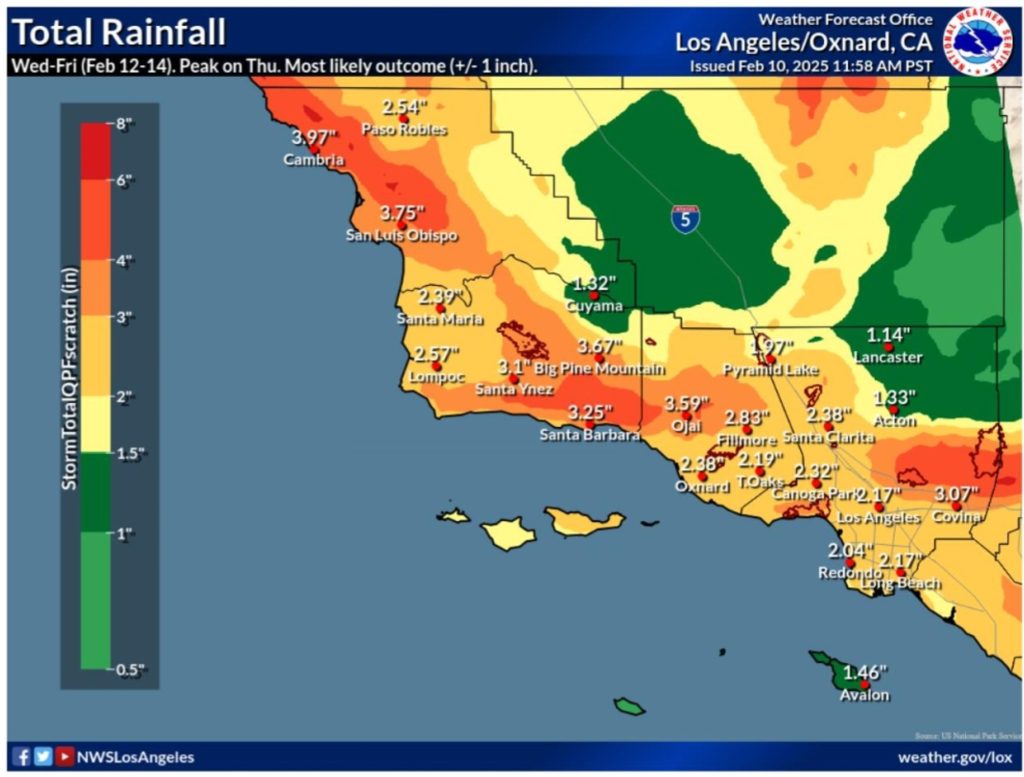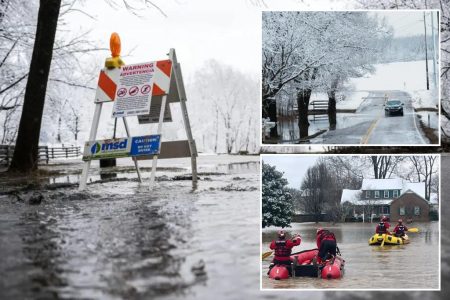Heavy Rain and Flood Risks in Southern California: What to Expect
Southern California is bracing for several days of heavy rain, with the storm expected to impact the region from Wednesday through Friday. This rainfall comes with both benefits and risks. While it may help alleviate the dry start to the winter season, it also poses significant hazards, particularly in areas left vulnerable by recent wildfires. The National Weather Service (NWS) has issued multiple weather alerts, including flash flood watches, wind advisories, and flood watches, as the region prepares for potentially dangerous conditions. Residents, especially those in burn-scarred areas, are urged to stay vigilant and take necessary precautions.
Why This Rain Matters: The Legacy of Wildfires and Burn Scars
The risk of flooding and debris flows is heightened due to the aftermath of massive wildfires that swept through Southern California in January. These fires left behind burn scars, which are areas of land stripped of vegetation and destabilized soil. Without vegetation to absorb rainfall, these areas are much more prone to sudden and dangerous floods. Even though the flames have been extinguished, the burn scars remain a significant threat, particularly during heavy rain events. The incoming storm could exacerbate these risks, leading to life-threatening situations in vulnerable communities.
What to Know: Rainfall Totals and Areas at Risk
The NWS has provided detailed forecasts and warnings ahead of the storm. Rainfall totals are expected to vary by location, with lower elevation areas receiving 1 to 3 inches of rain on average. However, mountainous regions could see much higher amounts, with forecasts predicting 6 to 10 inches of rain in some areas. The NWS Los Angeles office has warned of a moderate risk of significant floods and debris flows, as well as a high risk for swift water rescues and urban flooding. The most critical period for these risks is expected to be on Thursday.
Specific areas of concern include the San Bernardino Mountains, Inland Empire, Riverside Mountains, Santa Ana Mountains, Orange County coast and inland areas, and San Diego County’s mountains, valleys, and coast. The NWS San Diego office has also issued warnings about "life-threatening debris flows" in and around recent burn scars. Residents in these areas are advised to monitor weather updates closely and be prepared to evacuate if necessary.
The Bigger Picture: Drought Relief and Long-Term Weather Outlook
Despite the dangers, the rain is a welcome relief for a region that has experienced a dry winter so far. Downtown Los Angeles, for example, has only received 2.65 inches of rain since October 1, far below the historical average of 8.3 inches for this time of year. However, the NWS Climate Prediction Center expects that the next six to 10 days will see above-average temperatures and below-average precipitation, suggesting that this storm may not mark the end of the dry conditions. While the rain will provide some short-term relief, it does not solve the broader issues of drought and water scarcity in the region.
What People Are Saying: Expert Insights and Warnings
Meteorologists and weather experts are sounding the alarm about the potential dangers of this storm. Bryan Lewis, an NWS meteorologist in Los Angeles, emphasized that Thursday and Thursday night will be the most critical period, with debris flows being the biggest concern. Even small creeks and low-lying areas could flood, highlighting the widespread risks associated with the storm. The NWS San Diego office took to social media to remind residents that the rain will impact everyone, from the coast to the deserts, and while snowfall is expected at higher elevations, snow levels will remain above 7,500 feet.
What Happens Next: Preparation and Response
As the storm approaches, residents are encouraged to take proactive steps to protect themselves and their property. Staying informed about weather updates, having emergency plans in place, and avoiding travel in flood-prone areas are just a few of the precautions recommended by officials. While the rain brings much-needed moisture to the region, it also serves as a stark reminder of the vulnerabilities left behind by recent wildfires and the ongoing challenges of drought. As Southern California navigates this storm, the focus will be on both immediate safety and long-term resilience in the face of climate-related risks.












